Idora Park (1899-1984)
Introduction
Text-to-speech Audio
Images
Postcard from the 1910s depicting the entrance to Idora Park.
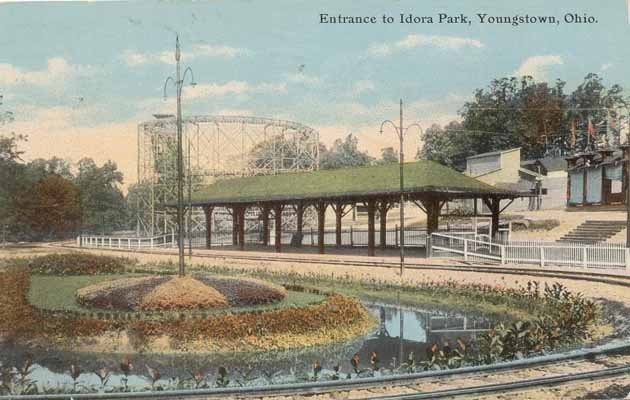
Youngstown Sheet and Tube Company employees at a picnic at Idora Park on Labor Day in 1939. The company sponsored an annual outing. The popular Jack Rabbit roller coaster is visible in the background.
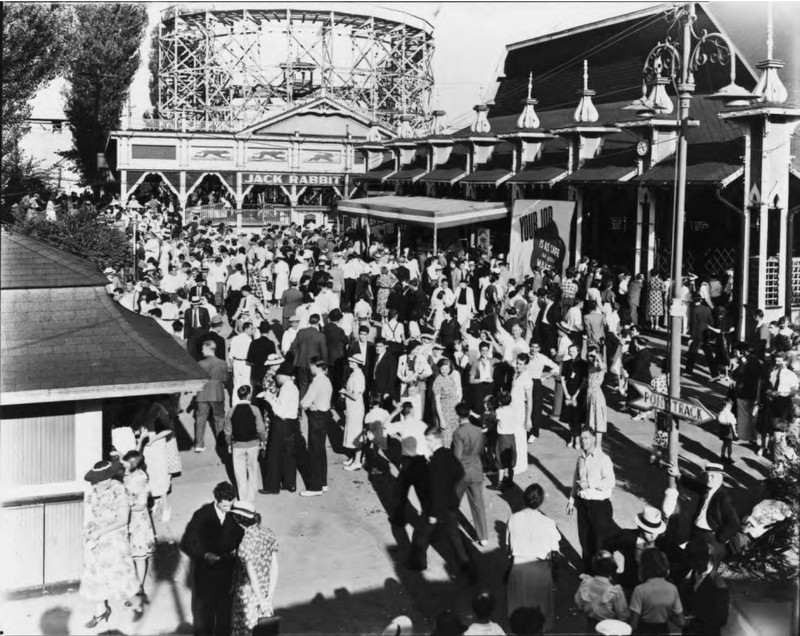
Idora Park sign advertising a sock-hop in the 1950s.
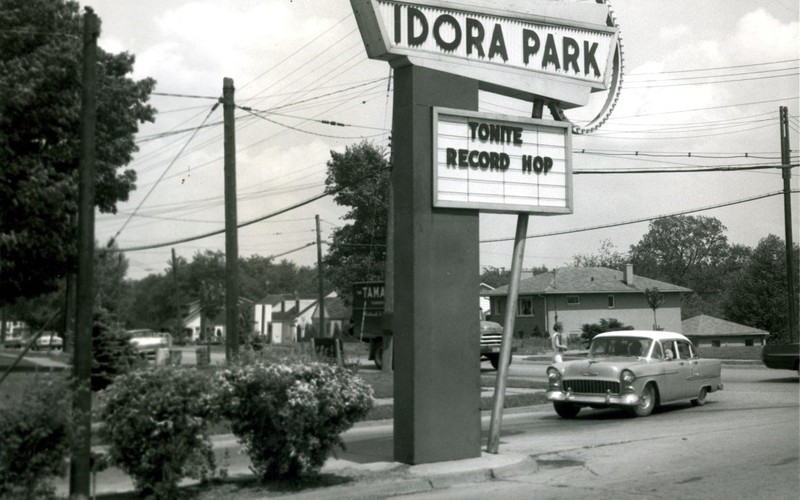
The Grand Ballroom was remodeled in the 1950s to include a dropped ceiling and indirect lighting.
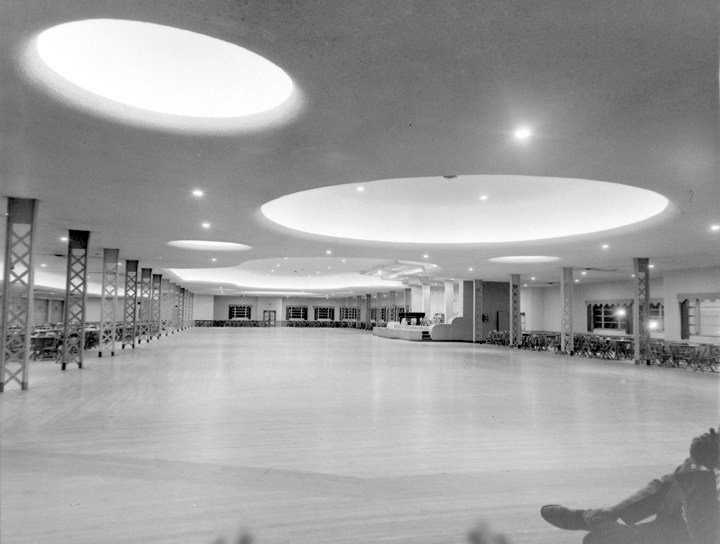
Youngstown Sheet and Tube Company employees before a baseball game at Idora Park on Labor Day in 1939. The Jack Rabbit roller coaster is visible in the background.
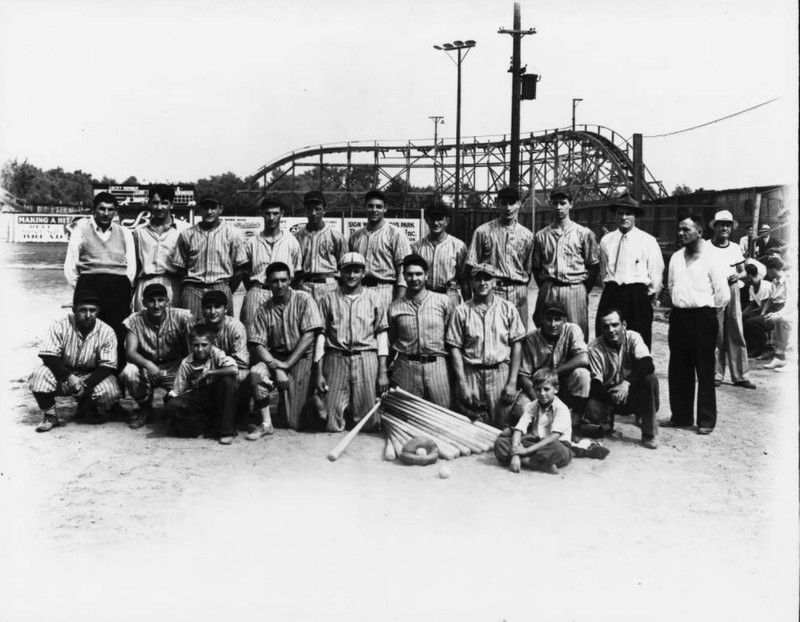
The Idora Park Merry-Go-Round, built in 1922 by the Philadelphia Toboggan Company, was restored and relocated to Brooklyn Bridge Park. It is now called Jane's Carousel and is housed in a glass pavilion by architect Jean Nouvel.
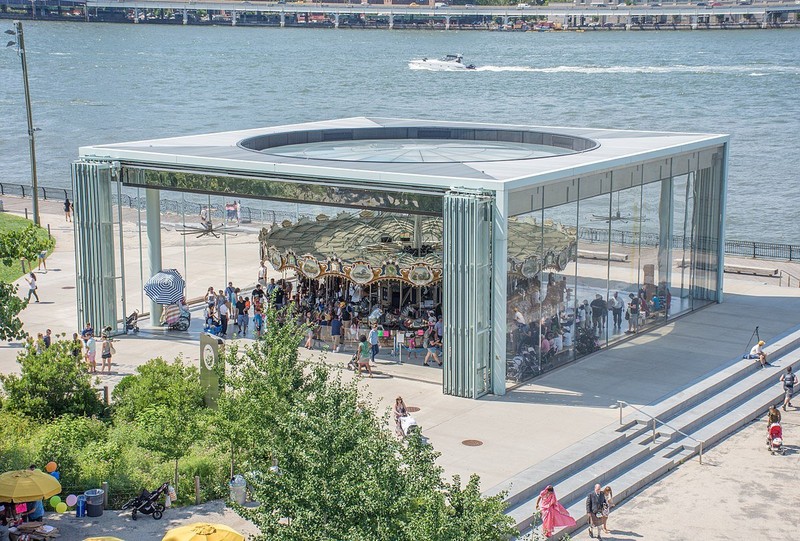
The Idora Park Experience in Canfield, Ohio preserves a collection of ride cars, signage, and other artifacts.
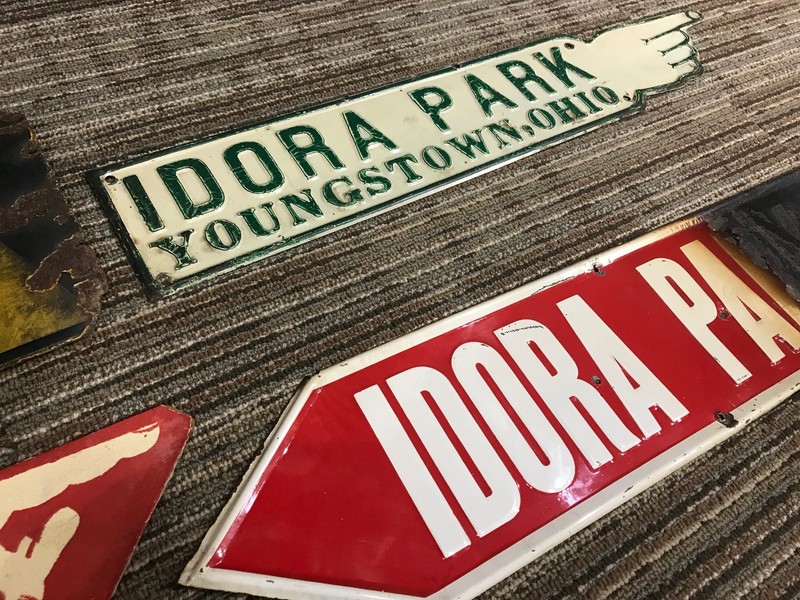
Backstory and Context
Text-to-speech Audio
Idora Park, first named Terminal Park, was built by the Youngstown Park and Falls Street Railway Company in 1899 as a “trolley park” at the terminus of a trolley line. Located adjacent to Mill Creek Park on the outskirts of the city, Idora Park provided a picturesque escape from the pollution of the steel mills and congestion of the city. The park had no admission fee, so anyone who could afford the streetcar fare could enter the park.
Idora first housed a dance hall and theater but quickly expanded in the early 1900s to include arcade games, a carousel, and the “Grand Ballroom” that attracted national acts such as John Philip Sousa, Guy Lombardo, and Cab Calloway. With the addition of a roller coaster in 1903, the park became a major regional attraction that competed with nearby Euclid Beach Park in Cleveland and Kennywood outside of Pittsburgh. By the 1920s, the original 7-acre plot of land had grown to about 28 acres and sports had become a noteworthy attraction. Major League teams, including the Cleveland Indians, Pittsburgh Pirates, and Boston Red Sox, played exhibition games at Idora Park, which had the only fenced-in baseball field in the city. As more African Americans moved to Youngstown to work in the steel mills, the park became a frequent stop for the Negro Leagues as well.
The installation of the Jack Rabbit and Wild Cat roller coasters, an Olympic-sized swimming pool, a Ferris wheel, and a larger carousel spurred significant growth in the 1920s, 1930s, and 1940s. Idora became known as “Youngstown’s Million Dollar Park” as people of all classes, ages, and races flocked to the park for affordable entertainment in the midst of the Great Depression and World War II rationing.
The post-war affluence of the 1950s ushered in new changes and increased prosperity. The ballroom was remodeled and began hosting sock-hops, Kiddieland was built over the pool to attract baby boomer families, and modern highways allowed increased traffic. The shift toward attracting a younger generation continued in the 1960s as Idora began hosting rock bands such as the Eagles and The Monkees, charging admission for the first time, and re-theming attractions to fit the psychedelic trends of the time.
The expansion of television and air conditioning, the rise of gas prices, and the closing of steel mills in the 1970s caused a sharp decline in attendance, and Idora Park struggled financially throughout the 1970s and early 1980s. A catastrophic fire on April 26, 1984 destroyed the park’s major attractions and drastically impacted attendance, which led to Idora closing at the end of the 1984 season. After its closure in 1984, items were auctioned off and Mt. Calvary Pentecostal Church in Youngstown bought the property with plans to build a religious complex called “City of God.” This complex never materialized as the church lost the property after accumulating massive debt. The Idora Park Historical Society succeeded in having the park added to the National Register of Historic Places in 1993, but this designation did little to help its preservation as the remaining structures on the property were vandalized or destroyed.
However, the memory of Idora Park lives through the few surviving structures and artifacts. The Idora Park Merry-Go-Round can still be enjoyed in Brooklyn Bridge Park in New York. After the park’s closure, the carousel was relocated to Brooklyn where it was restored and opened to the public in 2011 as Jane’s Carousel. The Idora Park Experience in Canfield, Ohio gives visitors the opportunity to reminisce over a collection of ride cars, signage, and other artifacts, the result of a 25-year endeavor by Jim and Toni Amey to collect bits of their childhoods and preserve the memory of a beloved local attraction.
Cite This Entry
Brianna Treleven on behalf of Ohio History Service Corps . "Idora Park (1899-1984)." Clio: Your Guide to History. November 30, 2018. Accessed March 31, 2025. https://theclio.com/tour/1901/1
Sources
Scarsella, Richard S. Memories and Melancholy: Reflections on the Mahoning Valley and Youngstown, Ohio. Self-published, iUniverse, 2005.
Shale, Rick. "The History of Idora Park (1899—1984)." Mahoning Valley Historical Society. April 26, 2014. Accessed November 26, 2018. https://mahoninghistory.org/2014/04/26/the-history-of-idora-park-1899-1984/
Skrdla, Harry. Ghostly Ruins: America's Forgotten Architecture. New York: Princeton Architectural Press, 2006.

